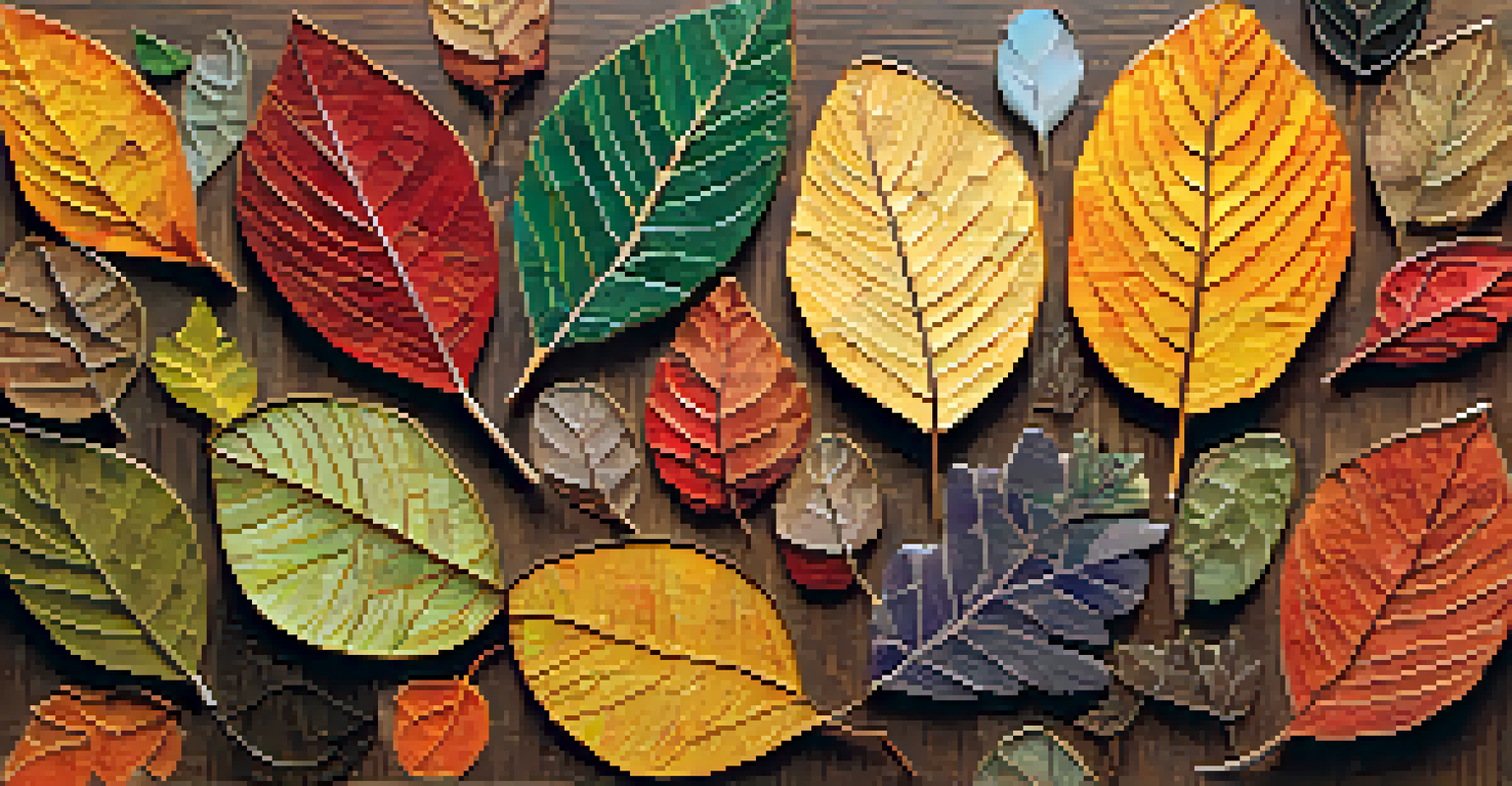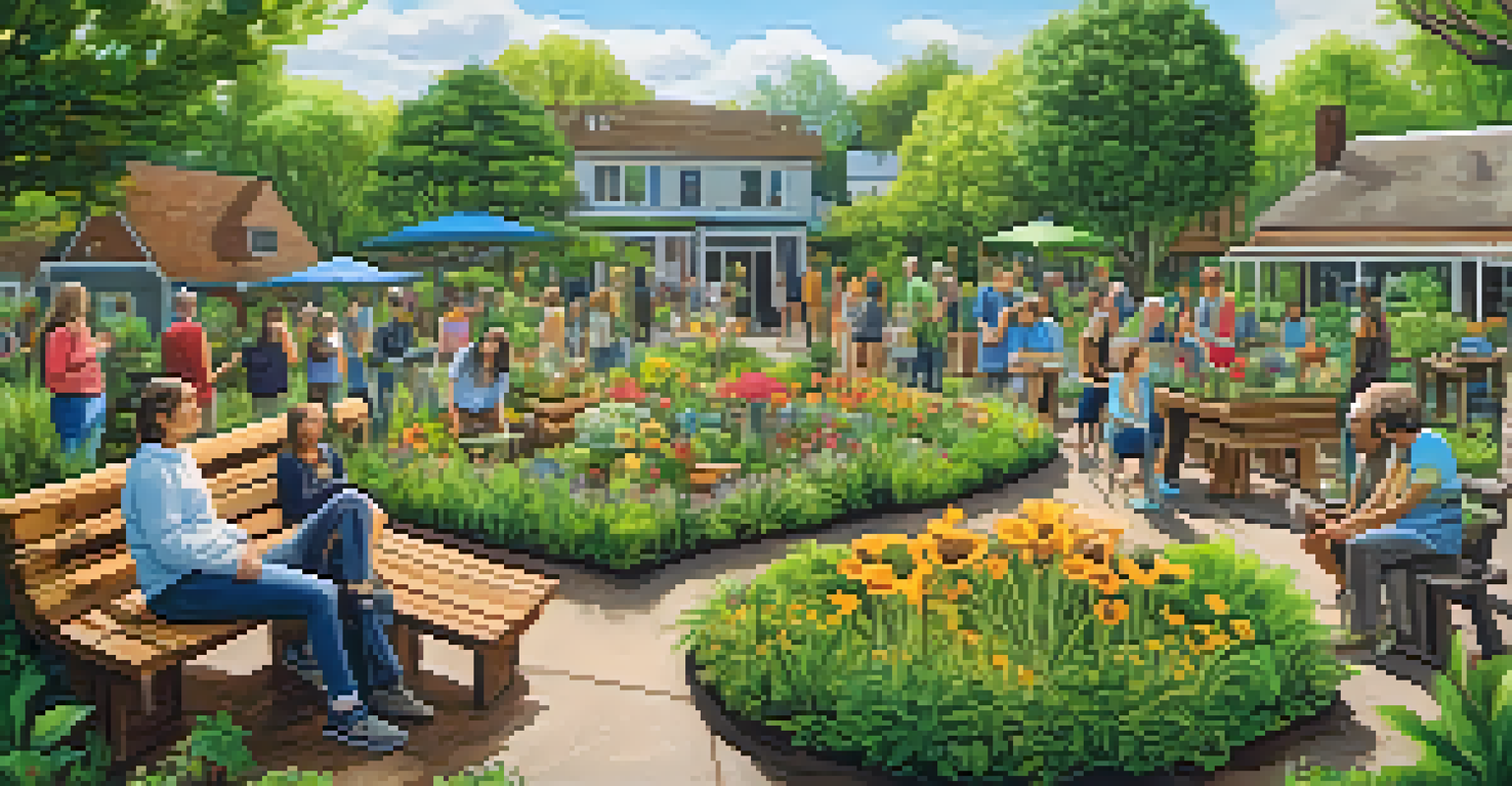Nature-Inspired Art: Celebrating the Beauty of Our Planet

The Essence of Nature in Artistic Expression
Nature has always been a profound source of inspiration for artists around the globe. From the delicate petals of a flower to the grandeur of a mountain range, the natural world offers endless possibilities for creative expression. This connection between nature and art allows us to explore and celebrate the beauty of our planet in ways that resonate with our emotions.
Art is the most beautiful of all lies; it is the truth that can be seen when we look at nature.
By incorporating elements of nature into their work, artists can evoke feelings of tranquility, awe, or even nostalgia. Think of how a serene landscape painting can transport you to a peaceful meadow or how a sculpture made from driftwood can remind you of a calming beach. These artistic pieces serve as a bridge between the viewer and the beauty of the earth.
As we delve deeper into the world of nature-inspired art, we discover that it not only reflects our surroundings but also invites us to reflect on our relationship with the environment. This interplay is vital in fostering a greater appreciation for nature and encouraging conservation efforts.
The Role of Color in Nature-Inspired Art
Color plays a pivotal role in how we perceive and interpret nature-inspired art. The vibrant hues of a sunset or the soft pastels of spring blossoms can evoke specific emotions and memories. Artists often use color to capture the essence of the natural world, creating a visual experience that resonates with viewers.

For instance, a painting dominated by warm oranges and reds might evoke the heat of a summer day, while cooler blues and greens can bring to mind the tranquility of a forest. By understanding the psychological effects of color, artists can effectively communicate their message and engage their audience on a deeper level.
Nature Fuels Artistic Inspiration
Artists draw profound inspiration from the natural world, using it as a means to celebrate beauty and reflect on our relationship with the environment.
Ultimately, the use of color in art is a powerful tool that helps bridge the gap between nature and human experience. It encourages us to explore our feelings about the world around us and inspires us to appreciate the diversity and beauty that nature offers.
Nature as a Medium: The Use of Organic Materials
Many artists are now turning to organic materials to create their works, directly incorporating elements from nature into their art. This approach not only highlights the beauty of the materials themselves but also emphasizes the connection between the artist and the environment. Imagine a stunning mosaic made from colorful leaves or a sculpture crafted from stones collected during a hike.
Nature is not a place to visit. It is home.
Using natural materials can bring a unique texture and authenticity to the artwork, inviting viewers to experience a tangible connection to the earth. Additionally, it raises awareness about sustainable practices, encouraging both artists and audiences to consider the impact of their choices on the planet.
This innovative approach to art encourages us to look at our surroundings with fresh eyes, prompting us to see the potential for creativity in even the simplest of natural elements.
Art as a Reflection of Environmental Concerns
In recent years, many artists have used their platforms to address pressing environmental issues through their work. By highlighting topics such as climate change, deforestation, and pollution, these artists aim to raise awareness and inspire action. This art serves as a powerful reminder of our shared responsibility to protect the planet.
For example, installations made from recycled materials can provoke thought about waste and consumption, while photography capturing the beauty of endangered species can evoke empathy and a desire to conserve. Art becomes a catalyst for conversation, encouraging viewers to engage with these critical issues.
Color Evokes Emotions in Art
The use of color in nature-inspired art significantly influences how viewers perceive and emotionally connect with the artwork.
By intertwining art and environmental advocacy, artists not only celebrate nature but also challenge us to reflect on our role in preserving its beauty for future generations.
The Therapeutic Power of Nature-Inspired Art
Creating or engaging with nature-inspired art can have profound therapeutic effects. Studies show that spending time in nature or immersing ourselves in artistic activities can reduce stress, enhance mood, and improve overall well-being. This connection is particularly important in our fast-paced, technology-driven world.
Imagine the calming effect of painting a serene landscape or the joy of crafting a piece of art from natural materials gathered during a walk. These activities not only provide a creative outlet but also foster mindfulness, allowing us to connect with nature and ourselves on a deeper level.
By embracing nature-inspired art, we can cultivate a sense of peace and balance in our lives, reminding us of the beauty that surrounds us and the importance of nurturing our mental health.
Nature-Inspired Art in Different Cultures
Across the globe, various cultures have found inspiration in nature, leading to a rich tapestry of artistic expression. From the intricate patterns of Native American beadwork to the serene simplicity of Japanese ink paintings, each culture reflects its unique relationship with the environment. These art forms not only celebrate nature but also tell stories of the people and places that inspire them.
For example, Indigenous art often incorporates symbols that represent the land, animals, and plants significant to their culture. This storytelling aspect enriches our understanding of how different communities view and interact with the natural world.
Art Promotes Environmental Awareness
Many artists are using their work to address environmental concerns, fostering awareness and encouraging action towards conservation.
By exploring nature-inspired art from diverse cultures, we can gain insight into the universal appreciation for nature while also honoring the distinct perspectives that each culture brings to the table.
Connecting Communities Through Nature-Inspired Art
Nature-inspired art has the power to bring communities together, fostering collaboration and shared appreciation for the environment. Community art projects, such as murals or public installations, encourage local participation and can transform public spaces into vibrant reflections of the natural world. This collective effort not only beautifies the area but also strengthens community bonds.
Consider a community garden where local artists create sculptures from recycled materials, engaging residents in discussions about sustainability and the importance of nature. These projects can spark conversations, inspire creativity, and promote environmental stewardship among community members.

By connecting people through nature-inspired art, we create a platform for dialogue, collaboration, and a shared commitment to preserving the beauty of our planet.